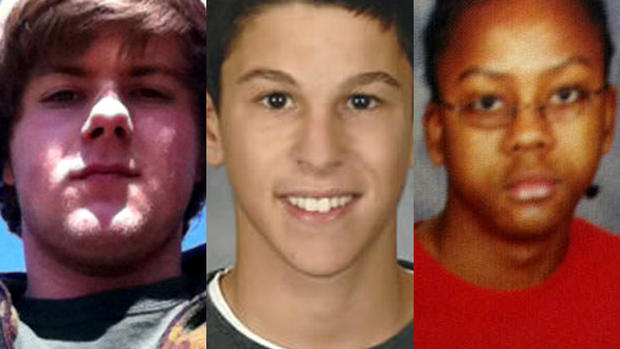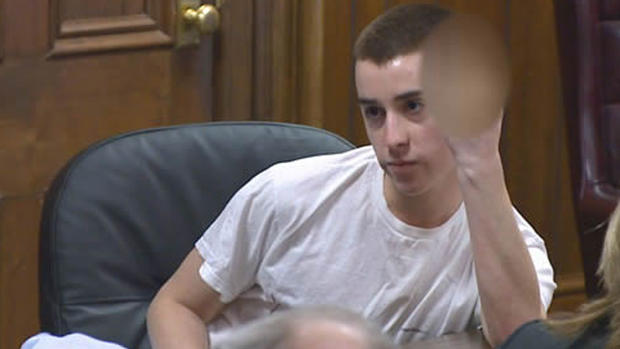How to respond when a gunman roams the halls
(Editor's Note: The author is the chief of police at Otterbein University, a private college in Westerville, Ohio.)
Monday morning's shooting at Chardon High School is another stark reminder that violence can happen at any given time and place. Most schools have crisis plans which include lockdowns in response to shooters inside school buildings. Students, teachers and staff receive little to no instruction on what to do when facing a school shooter. The philosophy is simple: when you hear gunshots, you need a plan.
Death toll in Ohio school shooting rises to 3
Alleged school gunman tipped off friends: Source
Special Section | Bullying: Words Can Kill
School personnel have good plans in response to fire alarm activation. They have excellent protocols for responding to a tornado siren. Not only are the plans well-documented but they are practiced at certain times of the year. They practice their plan to enhance learning. At a past FBI training session, the agent commented that more people are killed by gunfire in our schools than by fires or tornados. Given that, we should do a better job of preparing our children, teachers and administrators on what to do when faced with a shooter. What's the plan?
School districts review lockdown procedures but often fail to cover strategies for when a shooter enters a room and starts killing kids and teachers. A lockdown is a sound safety tool which is very appropriate given particular shooter situations. However, school districts and administrators need to provide a survival plan of what to do when students and teachers encounter a shooter face-to-face.
The survival concepts we teach at Otterbein are very simple but dynamic. There are three basic survival responses to a shooter on campus. Run, Hide and Barricade, and as a last resort, Attack the Shooter. We emphasize to run to safety and get away from the danger. If deemed unsafe to run, hide and barricade in a room and work your plan.
The third survival tactic is the most difficult but nonetheless necessary. A shooter enters the classroom and starts shooting at people. Remember, there is nowhere to run or hide. The strategy begins with the first person who notices the shooter and yells "GUN." Everyone in the room throws whatever is available, as hard as they can, at the shooter's face causing him to flinch, and preventing him from taking aim. The "Throw and Go" tactic is implemented. Upon throwing items at the shooter, the occupants rush to and swarm the shooter. The first few people are taught to attack and move the shooter's gun hand and gun toward the ground. At the same time or shortly after, the other swarmers attack and take the shooter to the ground. Students, faculty and staff are taught to strategically lay on the shooter's extremities as well as their core area to maximize the amount of weight on the shooter. In addition, they are taught to place ready-at-hand objects such as belts, T-shirts, etc., onto the shooter's throat, nose and eyes to disrupt breathing and sight. Once it is determined the shooter is no longer a threat, people are instructed to release pressure to allow breathing but maintain control on top of the shooter until the police arrive.
Critics of this survival tactic argue that you can't teach people to attack a shooter. When questioned about other options, they become silent. We can expect that when applying "Throw and Go" that some may be injured and possibly killed by the shooter. However, we can also expect that if people in that classroom do nothing; lie in frozen fear, afraid to fight to live, that the shooter will probably kill everyone in the classroom until stopped. That's not acceptable! People need to be taught tactics to live no matter how ugly. What's the alternative! The last thing we want at Otterbein is for our students, faculty and staff not to do anything and thus be executed.
We began researching survival options to school shooters after the tragedy at Virginia Tech in 2007. One learning point was that some school shooters like the ones at Virginia Tech and Northern Illinois University seem to desire a large body count for media attention. This is critical information when forming strategies such as barricading and attacking the shooter as a last resort. It is hoped that when a school shooter encounters a barricaded room, he/she won't take the time to attempt to break through because they know the police are coming to take care of the threat. They will probably move to easier, less protected targets to improve their body count.
The three survival concepts previous discussed (Run, Hide and Barricade, Attack) can be utilized anywhere and are obviously not limited for use in schools. Search the Internet for active shootings and note that shootings are happening everywhere, including churches, restaurants, malls, and countless other locations. Education and training are the keys to being prepared for this kind of crisis. The greatest obstacle to the training is thinking that, "It will never happen here." Big mistake.
It's said in the survival world that the mind is the greatest weapon and that's true. So let's put this in proper perspective. Responding to school shooters is simply another crisis to prepare for much like fires, tornados, bomb threats, etc. Schools are very safe for the most part. This dialog is not intended to motivate an action plan based on scare tactics. Rather, much like Virginia Tech in 2007, maybe it can be a wake-up call where appropriate.
Larry Banaszak is the chief of police at Otterbein University. In the past five years, the Otterbein Police Department has hosted numerous active-shooter training sessions for university students, staff and faculty as well as going to other school districts, businesses and governmental agencies. The opinions expressed in this commentary are solely those of the author.

